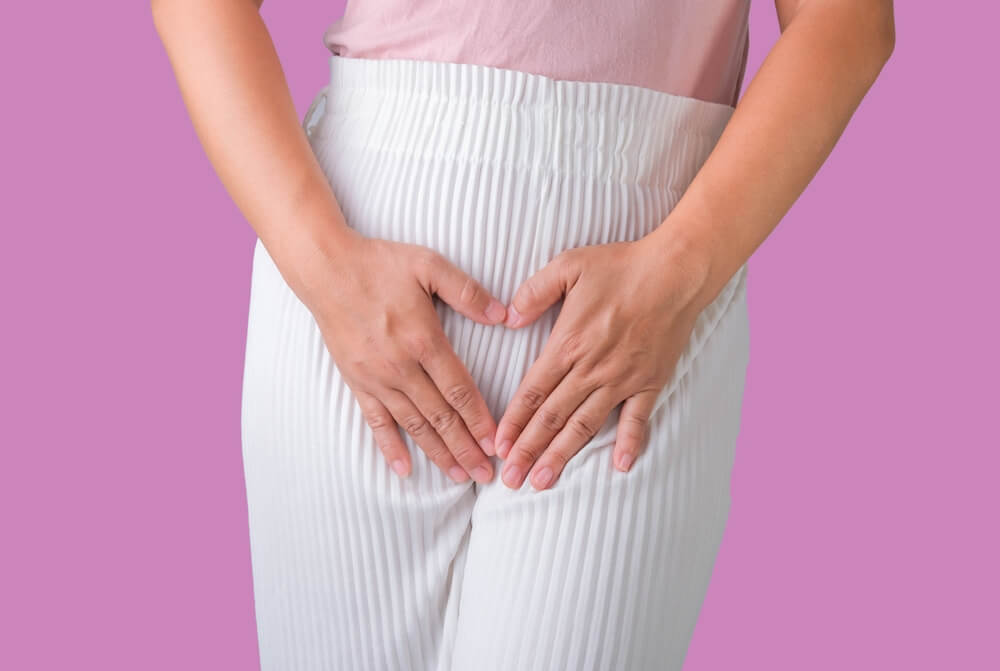Every woman’s body is a complex ecosystem, with unique health considerations ripe for understanding and nurturing. One significant facet of women’s health that remains largely misunderstood yet paramount is the vaginal pH balance. To put this into context, pH is a scale used to specify the acidity or alkalinity of an aqueous solution, and this applies to the female vagina.
The vaginal pH balance refers to the acidity level maintained within the vagina to prevent infections and maintain optimal health. This balance is essential as it plays a crucial role in warding off infections and ensuring overall well-being. In a healthy state, the vaginal pH balance typically leans towards being more acidic, with levels often ranging between 3.8 and 4.5.
Understanding and maintaining this delicate balance is of utmost importance for women, as an imbalance in pH can lead to a host of issues including bacterial vaginosis, yeast infections, and discomfort. To keep all this intact, clinics like Women’s Health Partners offer professional counseling and support.
The vaginal pH value can act as an indicator of potential health problems, facilitating timely diagnosis and treatment so that through a clearer comprehension of vaginal pH balance, its maintenance, and implications of imbalance, one can ensure optimal health and well-being. Stimulating conversations around this fundamental aspect of women’s health can empower them to make informed decisions better aligned with their health needs.
Detailed Analysis of the Vaginal pH Scale
The vaginal pH scale is an important metric in women’s health that measures the acidity and alkalinity levels in the vagina. By physiological design, the vagina is somewhat acidic, maintaining a balance that helps prevent infections and supports overall health.
Characteristics of a Normal Vaginal pH Balance
A healthy vaginal pH balance is typically between the readings of 3.8 and 4.5. This acidic environment is maintained by beneficial bacteria present in the vagina, primarily lactobacilli. These friendly bacteria generate lactic acid and other substances that maintain an acidic pH balance in the vagina.
The objective of this natural vaginal pH is to inhibit the growth of pathogenic microbes, which thrive better in alkaline environments. Hormone fluctuations can influence pH balance as well. Estrogen, for example, promotes the growth of lactobacilli. During menstruation and menopause, when estrogen levels drop, there might be slight variations in the vaginal pH.
Consequences of an Imbalanced Vaginal pH
When the pH balance in the vagina shifts towards the more alkaline side of the scale, causing a deviation from the natural acidic environment, it can lead to several health problems. A common issue associated with an imbalanced vaginal pH is bacterial vaginosis, where an abnormal growth of bacteria replaces the indigenous lactobacilli. Symptoms of a pH imbalance can include unusual discharge, itching, burning, and even discomfort during intercourse.
Moreover, a disordered pH balance can increase susceptibility to sexually transmitted infections (STIs) and urinary tract infections (UTIs). Yeast infections, while commonly associated with pH imbalance, are in fact yeast fungi that can overgrow despite the vaginal environment’s acidity.
Maintaining the vaginal pH and understanding the causes of its imbalance therefore becomes essential for women’s health. It forms an integral part of feminine hygiene and self-care; using pH-balanced products or pH tests for women can be a useful step in ensuring the well-being and warding off potential infections.
Factors that may influence Vaginal pH Balance
A range of factors can influence the vaginal pH balance:
- Diverse environmental,
- lifestyle,
- dietary conditions
- medical conditions
All of these can cause shifts in the delicate balance, leading to potential discomfort, infections, and other complications. These factors can distort the natural vaginal acidity levels and the overall vaginal health, underscoring the need for awareness and appropriate measures to maintain pH balance.
Dietary and Lifestyle Influences on Vaginal pH
Our diet and lifestyle choices significantly impact our overall health, and this includes our vaginal acidity levels. Healthy eating habits can help maintain the natural vaginal pH. A diet rich in probiotics, like yoghurt, can support the growth of lactobacilli, helping to sustain the needed acidity. Regular consumption of fruits, vegetables, and plenty of fluids can also enable the body in maintaining its pH balance.
Maintaining good hygiene is also imperative in this regard. However, it’s essential to remember that the vagina is self-cleaning, and the use of harsh soaps or douching can disrupt the natural pH balance, leading to infections. Keeping these habits in check is paramount for maintaining vaginal pH.
Medical Conditions and Medications that May Alter Vaginal pH
Several medical conditions and medications have the potential to upset the delicate pH balance in the vagina. Certain antibiotics, for instance, can deplete the supply of good bacteria, thereby causing an imbalance.
Similarly, hormonal contraceptives, and hormonal changes, such as those seen during menstruation, pregnancy, and menopause, have a profound effect on the vaginal pH. This is due to estrogen levels influencing the growth of lactobacilli, which helps maintain acidity levels. Medical conditions such as diabetes can also influence vaginal pH since higher blood sugar levels can foster the growth of certain types of bacteria and yeast.
Vaginal pH is a significant aspect of women’s health, and maintaining it necessitates taking various factors into account. Making informed decisions about personal care products, dietary habits, medication use, and understanding potential health implications can help ensure optimal vaginal health and pH balance.

Measures to Maintain and Restore Vaginal pH Balance
Paying attention to your body’s indicators, alongside adopting healthy practices and making informed choices, can significantly aid in maintaining and restoring the delicate vaginal pH balance. Understanding what to do when an imbalance does occur is also vital in promptly restoring pH levels to their natural state and minimizing discomfort or potential complications.
Recommended Hygienic Practices for Preserving Vaginal pH Balance
Proper hygiene is crucial in maintaining optimal vaginal health. Contrary to common misconceptions, the vagina is a self-cleaning organ, and excessive washing, especially with harsh soaps or shower gels, can disrupt the natural vaginal pH. Similarly, douching or use of scented feminine hygiene products can upset the delicate balance.
Cotton underwear is recommended as it allows the area to breathe, reducing the chance of bacteria and yeast overgrowth. During menstruation, frequent changing of sanitary products is important to prevent an environment conducive to bacterial growth. Also, maintaining a healthy lifestyle, which includes a balanced diet and regular exercise, can contribute positively to overall vaginal health and the pH balance.
Suitable Treatments and OTC Products that Support Vaginal pH
When an imbalance does occur, several treatments can assist in the vaginal pH restoration process. Over-the-counter (OTC) products, such as pH-balanced washes and suppositories, are often recommended and judging by personal responses, have proved successful.
However, when dealing with recurring issues, a healthcare provider may recommend pH tests for women to better understand their unique needs and suggest a tailored approach. This could include specific medications, probiotics, or a change in diet. Probiotics, in particular, have gained attention for their role in promoting the growth of lactobacilli, the good bacteria essential in maintaining the acidity of the vagina.
Ultimately, maintaining a balanced vaginal pH is a critical aspect of women’s health. Awareness and understanding of the body’s needs, plus a gentle, responsive approach to personal hygiene, can play a tremendous role in embracing and nurturing your feminine pH balance.
Closing Thoughts on the Importance of Vaginal pH Balance
The topic of vaginal pH balance might appear complicated initially, however, it is an aspect of women’s health that cannot be overlooked. The balance between acidity and alkalinity in the vagina is crucial for optimal health, protecting against infections, discomfort, and potential complications. Understanding and maintaining this delicate equilibrium can significantly contribute to overall well-being and vitality.
Apart from lifestyle choices and hygiene practices, awareness about the potential factors leading to pH imbalance is core to this issue. These factors include dietary habits, hormonal influences, the use of antibiotics, and certain medical conditions. By keeping these aspects in check, one holds the power to ensure a healthy vaginal environment, further underscoring the holistic nature of health – every part of our body is intricately connected to the whole.
Proactive measures like at-home pH testing, using pH-balanced products, and fostering a dialogue with healthcare providers about vaginal health can result in a more nuanced understanding of personal health needs. Women should feel encouraged to ask questions, seek advice, and become familiar with their bodies. After all, knowledge is power, and the more informed we are about our bodies, the better we can care for them.
In conclusion, the pH balance is not just a number but an indicator of vaginal health. Understanding and investing in maintaining this balance is an investment in overall well-being. With the change in tide where conversations about women’s health are increasingly becoming mainstream, it is time to embrace these discussions and see them for what they truly are – essential, empowering, and utterly normal. Call us today and let us keep your reproductive health balance on point!


